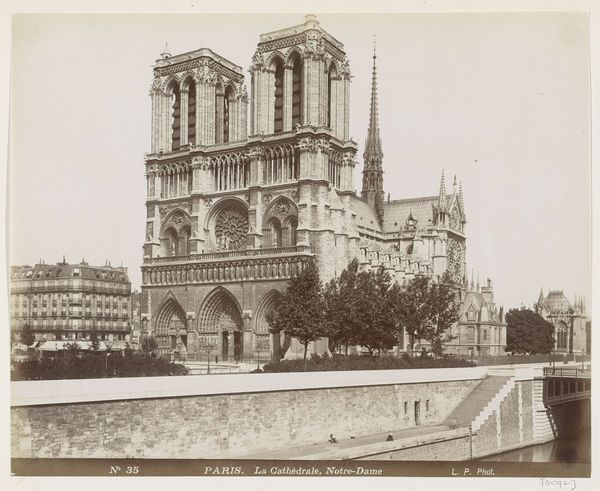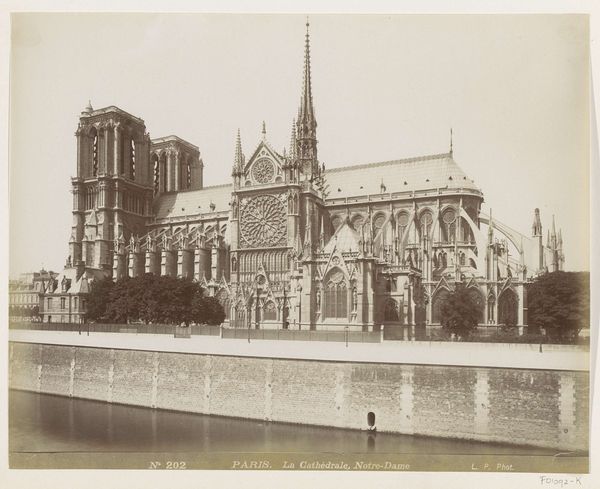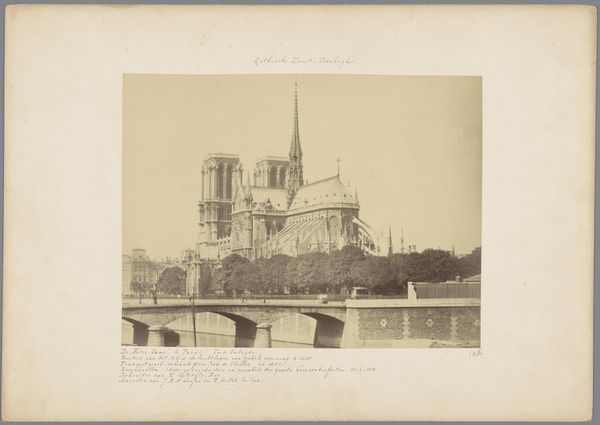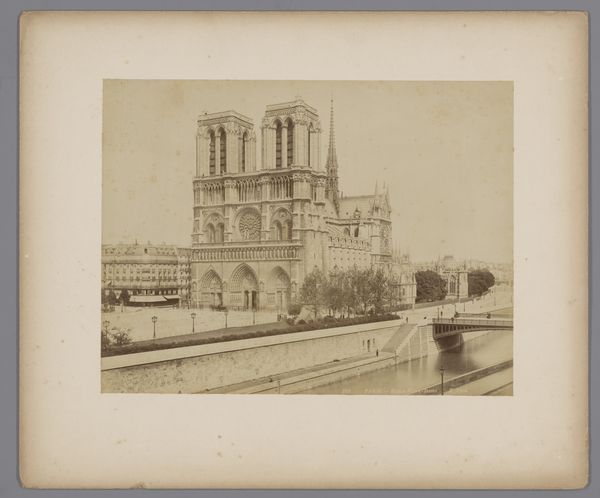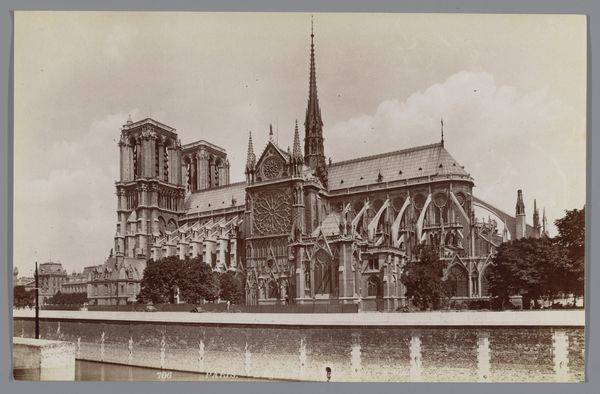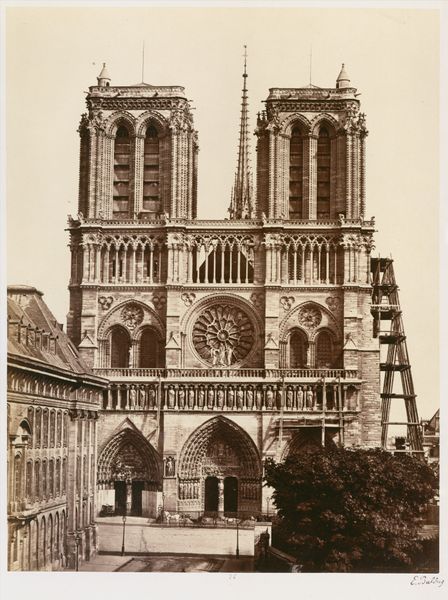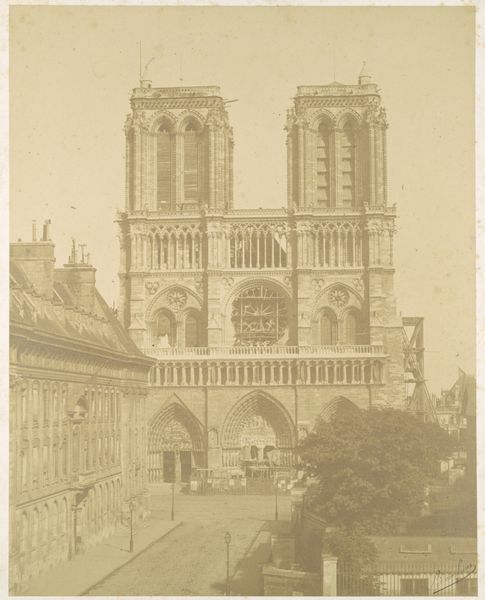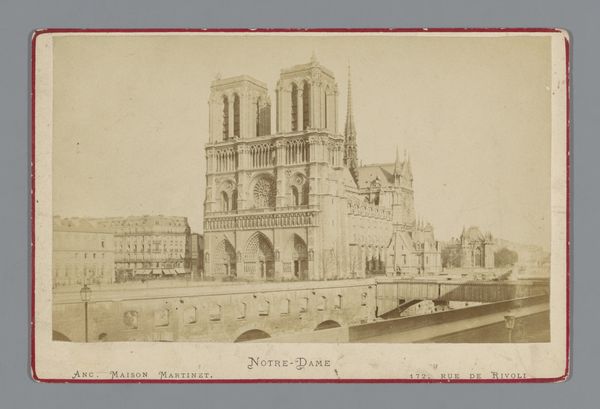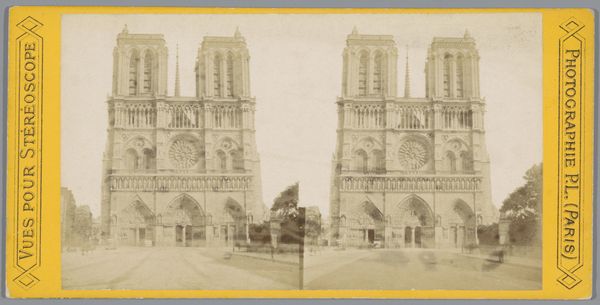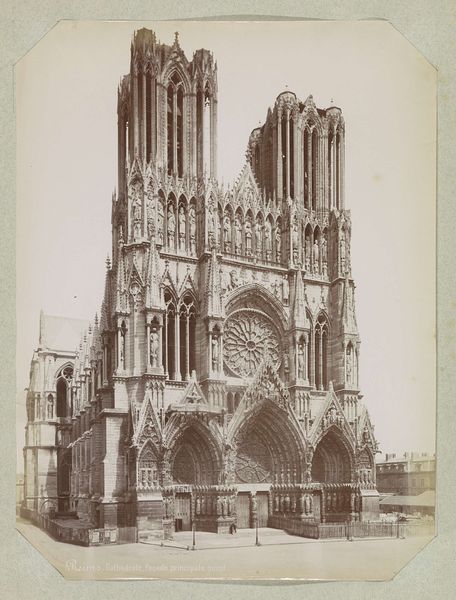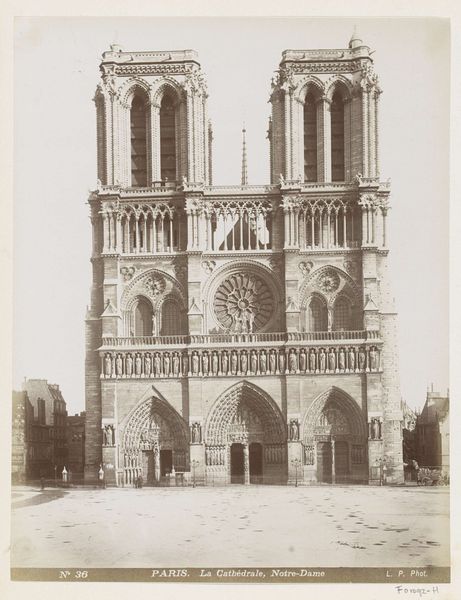
Dimensions: 21.7 x 28.6 cm. (8 9/16 x 11 1/4 in.)
Copyright: Public Domain
Curator: What a remarkably detailed albumen print! It presents the Notre-Dame Cathedral in Paris, as viewed from across the Seine. Édouard Baldus captured this image sometime in the 1860s. The work presents a moment frozen in time in Paris. Editor: It's visually arresting. The sheer scale of the cathedral is cleverly emphasized by its positioning relative to the bridge and smaller buildings in the background. I also think it is romantically framed; a beautiful view of classic gothic forms from the natural, serene environment. Curator: The formal composition truly guides the eye, doesn't it? Observe how the horizontal line of the bridge contrasts with the cathedral’s verticality, drawing attention to the intricate gothic architecture. Note especially the placement of each spire against the sky. Each detail guides the viewing process. Editor: I am immediately drawn to what's happening on the ground level. It provides such interesting cultural context, even showing signs of some construction or change along the riverbank, which adds a fascinating historical layer to the religious icon that it centers around. How fascinating it captures the shifts and rhythms of a bustling city and sacred location. Curator: Precisely. Baldus meticulously captured not only the physical structure but also the city’s dynamic interplay between nature and progress. Note, too, how light plays across the stonework, almost transforming static stone into something ethereal. It shows Baldus' sensitivity to light as a constructive element in his photography. Editor: And think about how access to photography democratized views of monumental landmarks like Notre-Dame. Before, only the elite might travel and see such grandeur; these prints brought iconic structures to the masses and captured a time period. How many people encountered Paris itself just by holding these in their hands, in their homes. Curator: A very astute point; a democratization of architectural splendor indeed. We have touched on everything from architectural structure and aesthetic form, to sociopolitical influence, it is so complex. Editor: Yes. Every element underscores Baldus' skill in encapsulating the spiritual and social fabric of nineteenth-century Paris. Each analysis leaves you considering what lies ahead and in the past.
Comments
No comments
Be the first to comment and join the conversation on the ultimate creative platform.
